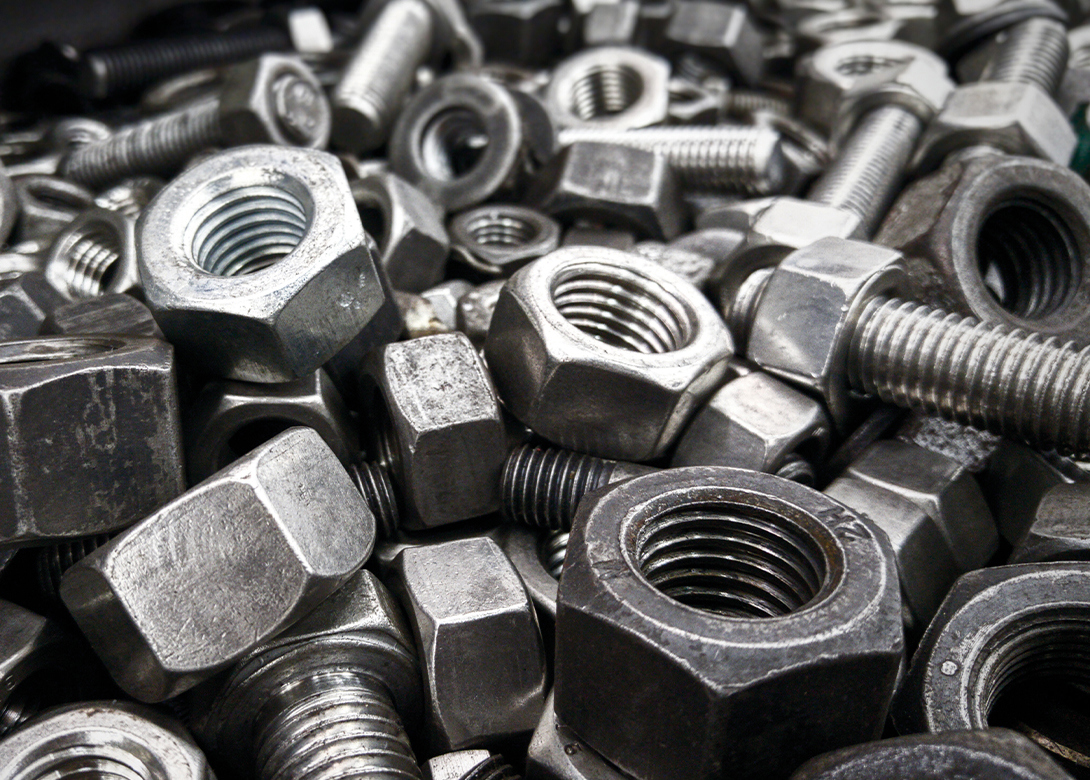
Here Dr Bill Eccles of Bolt Science discusses whether a thin nut or a thick nut should go next to the joint when using two nuts to lock a thread.
I had been of the opinion that when two nuts were being used to lock a thread, the thicker of the two nuts should go next to the joint. I had this as one of the ‘tips for the day’ on some software and a couple of years ago was taken to task that this was wrong. The thin nut should go next to the joint.
My reasoning was that nut heights had been decided by establishing the least height that would ensure the bolt would break before the threads started to shear. So if you wanted to get the maximum preload into the fastener then the thick nut should go first so that thread stripping was prevented. If you put the thin nut first, the preload would be limited by the thread stripping (whose failure may not be obvious at the time the nuts were tightened). Putting the thin nut on top of the thick nut, I thought, would assist in preventing the thick nut
self-loosening. I had also seen that using two nuts was a popular method on old machinery – and the ones that I had seen all had the thin nut on top of the thick nut.
The correct procedure, I was told, was to put the thin nut on first, tighten it to 30% or so of the full torque and then tighten the thick nut on top of it to the full torque value. You have to take care that the thin nut does not rotate when you are tightening the thick nut. The tightening of the thick nut would impose a preload on the joint equivalent to that which would be obtained from approximately 70% of the tightening torque. The idea is that the bolt threads engaging on the thin nut disengage so that the thick nut takes the preload by taking up the backlash on the threads of the thin nut – the thin nut being jammed against the thick nut. This helps to prevent self-loosening and improves the fastener’s fatigue performance by modifying the load distribution within the threads. Doing it the other way, thin nut on top of the thick nut, does not jam the parts together sufficiently.
Two years on and I am still unconvinced. I am still asked the two nut question but I always tend to recommend other more modern ways of locking the threads. I think that the reasons that I am not easy with the method is that it is too reliant upon the skill of the person tightening the joint. There is also the amount of backlash in the threads (you could strip the threads of the small nut if it was a tight fit) and the preload will be down on what it could be as well.
For more information visit: www.boltscience.com/pages/twonuts.htm
Updated version of ISO 4032
The ISO 4032 standard on hexagon regular nuts and ISO 4033 on hexagon high nuts, which are replacing the previous 2012 standards, have recently been updated.
Several changes have been made to the ISO 4032 standard – including the introduction of additional property classes and thread sizes; the addition of duplex stainless steel nuts D4 and D6; as well as the addition of property Class 80.
The ISO 4032 standard also includes Annex A that relates to historical nuts. The nuts being referred to are nuts to the former DIN 934 nut standard that was withdrawn in 1992. A warning has been added: ‘These historical nuts should not be used for new or critical applications (e.g tightening near or above the yield limit, dynamic loading)’. This emphasises the point that DIN 934 nuts are not as strong as the equivalent ISO nut.

Having spent a decade in the fastener industry experiencing every facet – from steel mills, fastener manufacturers, wholesalers, distributors, as well as machinery builders and plating + coating companies, Claire has developed an in-depth knowledge of all things fasteners.
Alongside visiting numerous companies, exhibitions and conferences around the world, Claire has also interviewed high profile figures – focusing on key topics impacting the sector and making sure readers stay up to date with the latest developments within the industry.
Don't have an account? Sign Up
Signing up to Fastener + Fixing Magazine enables you to manage your account details.